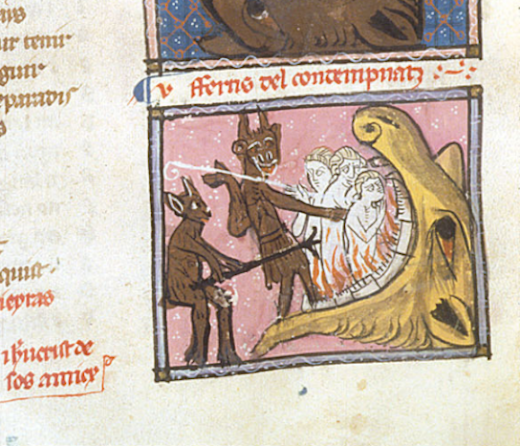Astrobiologists can now extrapolate the evolutionary characteristics of possible alien life, should it exist, given the wealth of data available on interplanetary conditions. But our ideas about aliens have drawn not from science but from what Adrian Horton at The Guardian calls “an engrossing feedback loop” of Hollywood films, comics books, and sci-fi novels. A little over three-hundred years ago — having never heard of H.G. Wells or the X‑Files — Dutch scientist Christiaan Huygens answered the question of what alien life might look like in his work Cosmotheoros, published after his death in 1698.
Everyone knows the names Galileo and Isaac Newton, and nearly everyone knows their major accomplishments, but we find much less familiarity with Huygens, even though his achievements “make him the greatest scientist in the period between Galileo and Newton,” notes the Public Domain Review.
Those achievements include the discovery of Saturn’s rings and its moon, Titan, the invention of the first refracting telescope, a detailed mapping of the Orion Nebula, and some highly notable advancements in mathematics. (Maybe we — English speakers, that is — find his last name hard to pronounce?)
Huygens was a revolutionary thinker. After Copernicus, it became clear to him that “our planet is just one of many,” as scholar Hugo A. van den Berg writes, “and not set apart by any special consideration other than the accidental fact that we happen to be its inhabitants.” Using the powers of observation available to him, he theorized that the inhabitants of Jupiter and Saturn (he used the term “Planetarians”) must possess “the Art of Navigation,” especially “in having so many Moons to direct their Course…. And what a troop of other things follow from this allowance? If they have Ships, they must have Sails and Anchors, Ropes, Pillies, and Rudders…”
“We may well laugh at Huygens,” van den Berg writes, “But surely in our own century, we are equally parochial in our own way. We invariably fail to imagine what we fail to imagine.” Our ideas of aliens flying spacecraft already seem quaint given multiversal and interdimensional modes of travel in science fiction. Huygens had no cultural “feedback loop.” He was making it up as he went. “In contrast to Huygens’ astronomical works, Cosmotheoros is almost entirely speculative,” notes van den Berg — though his speculations are throughout informed and guided by scientific reasoning.
To undermine the idea of Earth as special, central, and unique, “a thing that no Reason will permit,” Huygens wrote — meant posing a potential threat to “those whose Ignorance or Zeal is too great.” Therefore, he willed his brother to publish Cosmotheoros after his death so that he might avoid the fate of Galileo. Already out of favor with Louis XIV, whom Huygens had served as a government scientist, he wrote the book while back at home in The Hague, “frequently ill with depressions and fevers,” writes the Public Domain Review. What did Huygens see in his cosmic imagination of the sailing inhabitants of Jupiter and Saturn? Hear for yourself above in a reading of Huygens’ Cosmotheoros from Voices of the Past.
Huygens’ descriptions of intelligent alien life derive from his limited observations about human and animal life, and so he proposes the necessity of human-like hands and other appendages, and rules out such things as an “elephant’s proboscis.” (He is particularly fixated on hands, though some alien humanoids might also develop wings, he theorizes.) Like all alien stories to come, Huygens’ speculations, however logically he presents them, say “more about ourselves,” as Horton writes, “our fears, our anxieties, our hope, our adaptability — than any potential outside visitor.” His descriptions show that while he did not need to place Earth at the center of the cosmos, he measured the cosmos according to a very human scale.
Related Content:
Richard Feynman: The Likelihood of Flying Saucers
Josh Jones is a writer and musician based in Durham, NC. Follow him at @jdmagness




